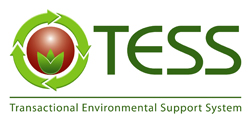Project Objectives
TESS's strategic objective is to design a decision support system related to environment and land use that will enable policy makers to integrate knowledge from the regional and local level into the decision making process, while also encouraging local people to maintain and restore biodiversity ecosystem services.
- Identify the information needs of policy makers, especially for strategic environmental assessment (SEA) and sustainability impact assessment (SIA), and how information is currently obtained (deliverable D2.2: model of information flows from local and regional to central)
- Identify practical needs and stakeholder perspectives in relation to decision making at the local and regional level, especially for environmental impact assessments (EIA) (deliverable D3.2: model of the local decision making process, including requirements for the implementation of a participatory approach).
- Assess existing data and modelling capabilities (including microsimulation, multi-agent, and simplified cellular automata) for predicting policy impacts on land uses, economics, ecosystem services and biodiversity in cultivated areas (deliverable D4.1: report on data and models for cultivation and biodiversity conservation).
- Apply the available information and bio-socio-economic models in 8 case studies, including 6 representative new Member States and Accession and Candidate States, to test (by simulation) how best to meet local decision support needs in exchange for local monitoring to meet central policy requirements (deliverable D5.3: case studies).
- Using knowledge from case studies and three previous outputs, survey government and land-management representatives across EU-27 on transaction needs and how policies on land uses and economic activity have impacted ecosystem services and biodiversity in cultivated areas (deliverable D5.2: correlation matrix/analysis of SEA, SIA and EIA governance factors, trends in land uses, economic activity, ecosystem services and biodiversity).
- Analyse how current use of SEA, SIA and EIA across the EU-27 has related to biodiversity indices at national and local level to identify best practise (deliverable D6.1: definition of governance requirements for best-practice).
- Integrate all models and information and consolidate the project's results in the design of a GIS-based system to support transaction of environmental information for all these assessments and decision support at central & local levels (deliverables D6.3,6:4: design for a decision support system, policy guidelines).
- Assess the transferability of the developed design for the decision support system in other fields of European Union's policy (such as fisheries, commerce and trade, health, transport, etc).
|

























